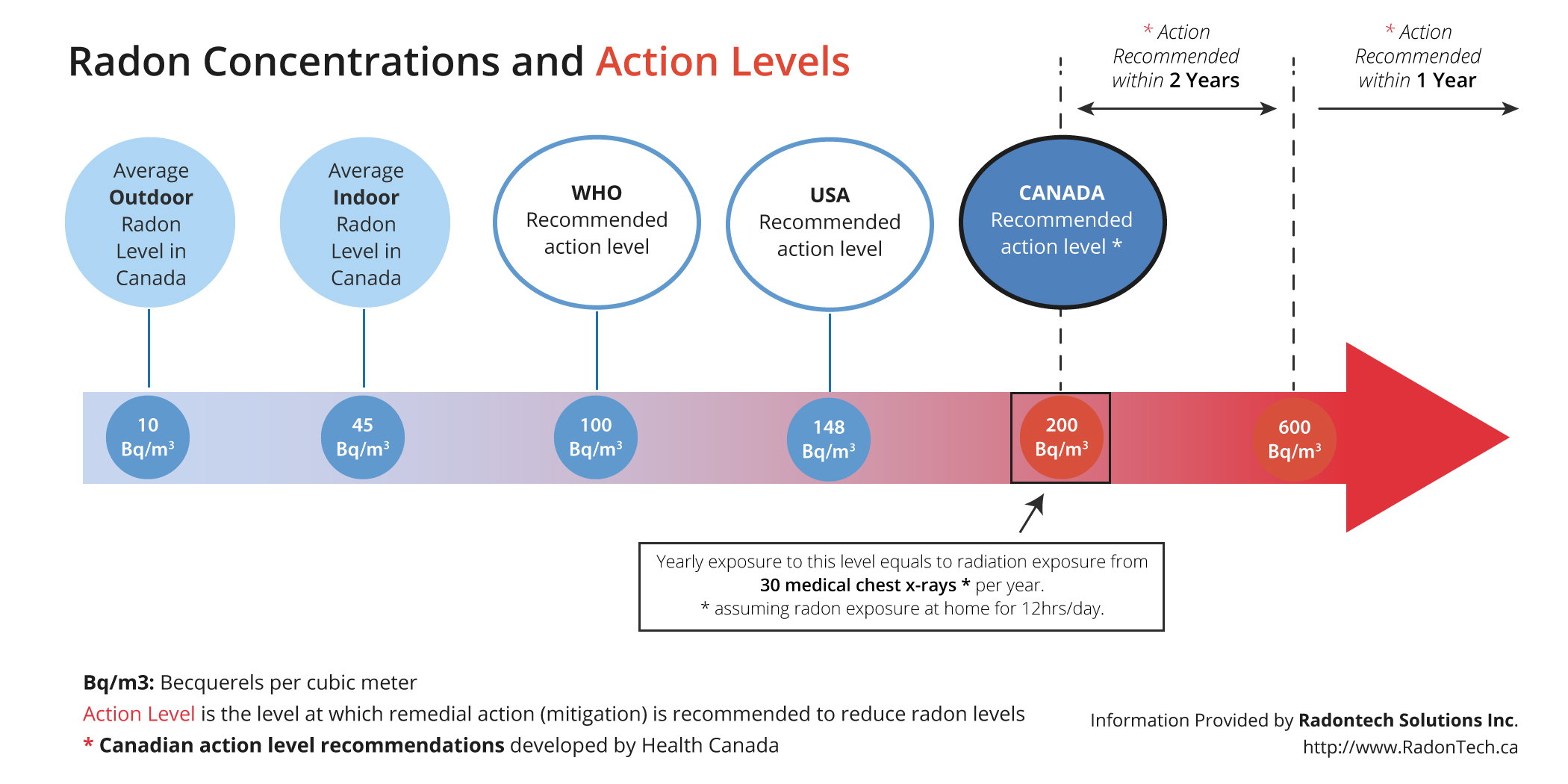What is radon gas? Is it hazardous?
Is radon really bad for you?
Breathing radon over time increases your risk of lung cancer. Radon is the second leading cause of lung cancer in the United States. Nationally, the EPA estimates that about 21,000 people die each year from radon-related lung cancer. Only smoking causes more lung cancer deaths.

Kids that are home all day long go to much more threat for breathing. Discover why radon is dangerous and why it's so difficult to find without testing. The research study appears the fatality knell of the straight, no threshold concept, while unlocking to the concept of hormesis-- the concept that low levels of ionizing radiation might actually be good for you.
The EPA establishes the level of harmful radon gas exposure at or over 4 pCi/L. It's recommended that you undergo reduction initiatives to decrease exposure if your home has actually radon gas degrees surpassing this action degree. You'll absolutely need mitigation and also may require more substantial remodellings to secure off the source of the gas if screening discloses a much greater degree.

Is radon mitigation really necessary?
When radon gas enters the body, it exposes the lungs to small amounts of radiation. In small quantities, experts say this is harmless. However, in persistent exposures or larger quantities, radon can damage the cells of the lining of the lungs, increasing a person's chance of developing lung cancer.
The very first significant studies with radon and health occurred in the context of uranium mining, initially in the Joachimsthal region of Bohemia and after that in the Southwestern United States during the early Cold Battle. Underground uranium mines may have high focus of radon due to the fact that radon is a product of the radioactive decay of uranium. Many uranium miners in the 4 Corners area got lung cancer and also other pathologies as a result of high degrees of exposure to radon in the mid-1950s. The searchings for were released in the journal Wellness Physics in 2008.
- Your threat of lung cancer cells raises substantially with exposure to greater radon degrees.
- Lung cancer cells risk increases 16% per 2.7 pCi/L rise in radon exposure.
- Radon gas is a naturally-occurring by-product of the radioactive degeneration of Uranium in the Get more info dirt.
- Relying on your geographic location, the radon levels of the air you take a breath beyond your home may be as high as 0.75 pCi/L.
- The national standard of outside radon degrees is 0.4 pCi/L as well as it is approximated by the National Academy of Sciences that exterior radon degrees cause around 800 of the 21,000 radon induced lung cancer deaths in the US annually.
- The United States EPA has actually placed it simply, stating, "Any radon direct exposure has some risk of causing lung cancer cells.
How do http://sco.lt/9IrILQ you eliminate radon?
Possible symptoms include shortness of breath (difficulty breathing), a new or worsening cough, pain or tightness in the chest, hoarseness, or trouble swallowing. If you smoke and you know you've been exposed to high levels of radon, it's very important to quit smoking.
In the United States, roughly 14 states have a state radon programs which train as well as license radon reduction contractors as well as radon dimension experts. If your state licenses radon experts contact your state wellness division, to figure out. Without the appropriate equipment or technological knowledge, radon degrees can actually increase or produce other potential hazards as well as additional prices. A listing of licensed reduction provider is readily available through state radon workplaces, which are noted on the EPA website at/ radon/whereyoulive. html.
What are the symptoms of radon in your home?
If a person has been exposed to radon, 75 percent of the radon progeny in lungs will become "harmless" lead particles after 44 years. When an alpha particle damages a cell to make it cancerous, the onset of lung cancer takes a minimum of 5 years but most often 15 to 25 years, and even longer.
The research paid very close attention to the mate's levels of smoking cigarettes, job-related direct exposure to health hazards as well as education accomplishment. However, unlike most of the household radon research studies, the research study was not population-based.
How long does it take for radon to cause cancer?
Fact: You will reduce your risk of lung cancer when you reduce radon levels, even if you've lived with an elevated radon level for a long time. Keep in mind that radon levels below 4 pCi/L still pose some risk and that radon levels can be reduced to 2 pCi/L or below in most homes.